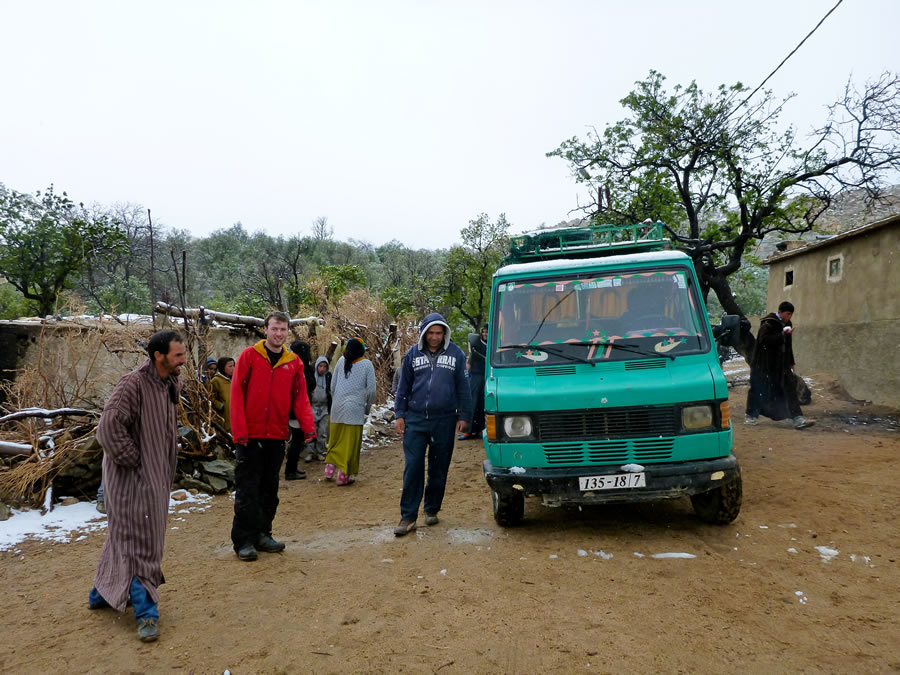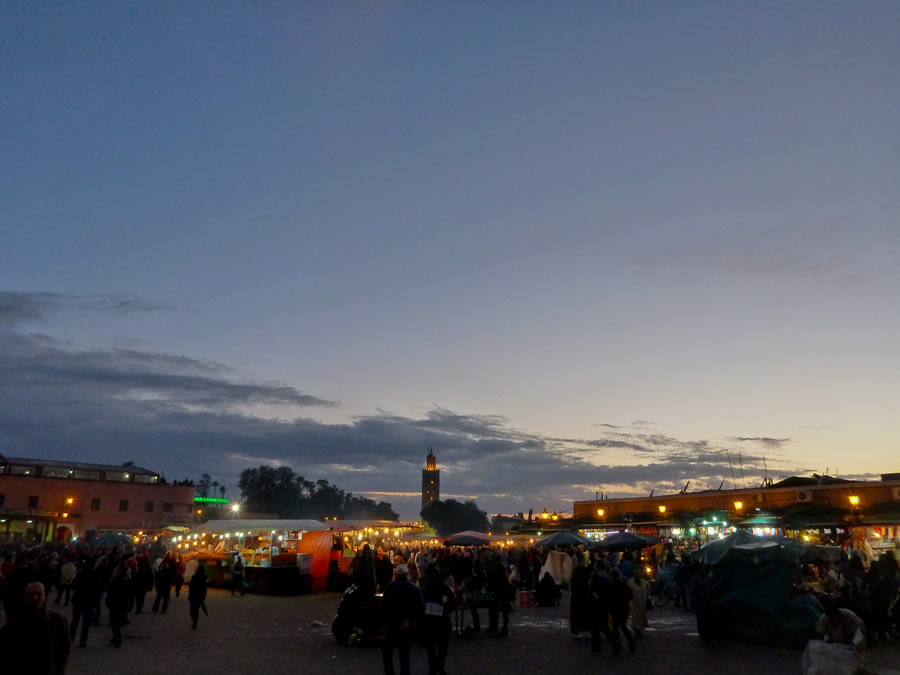The Ridge of a Hundred Peaks
Morocco, 2014
We’d only been in the country three hours and I’d already lost my sleeping mat.
We had landed that morning on the first flight from Heathrow and caught a taxi immediately on to the walled town of Taroudant. Sourcing fuel on a tight timescale after a flight to a foreign country is always a challenge but with our conversational French we were thankful to enlist the help of an enthusiastic local. White spirit in the country is sold in used wine bottles so when our new comrade offered to lead us to some “chardon” we followed him with delight, scurrying amongst the many turns of the covered market whilst doing our best to avoid collisions between large rucksacks and delicately balanced stalls. It wasn’t until he stood beaming by a large pile of wood that we realised our mistake, chardon was no slang for “Chardonnay”. He meant charcoal.
One hour later and mistake rectified we pulled away in the back of a white minibus on the road toward the Atlas. This time, we managed about two hundred metres before pulling over out of sight behind a wall. A toothless old lady beckoned us urgently from the vehicle and against our better judgement we abandoned our rucksacks and set off on foot after her. Fortunately this too ended well and far from being the robbery or scam we’d feared, our new drivers were simply avoiding a hefty police fine at the road block ahead. Back in the truck and mountain-bound it dawned on us that we’d encountered nothing but generosity in the Moroccan people and as foreigners we were perhaps too quick to view their unorthodox ways with suspicion.
“A toothless old lady beckoned us urgently from the vehicle and against our better judgement we abandoned our rucksacks and set off on foot after her.”
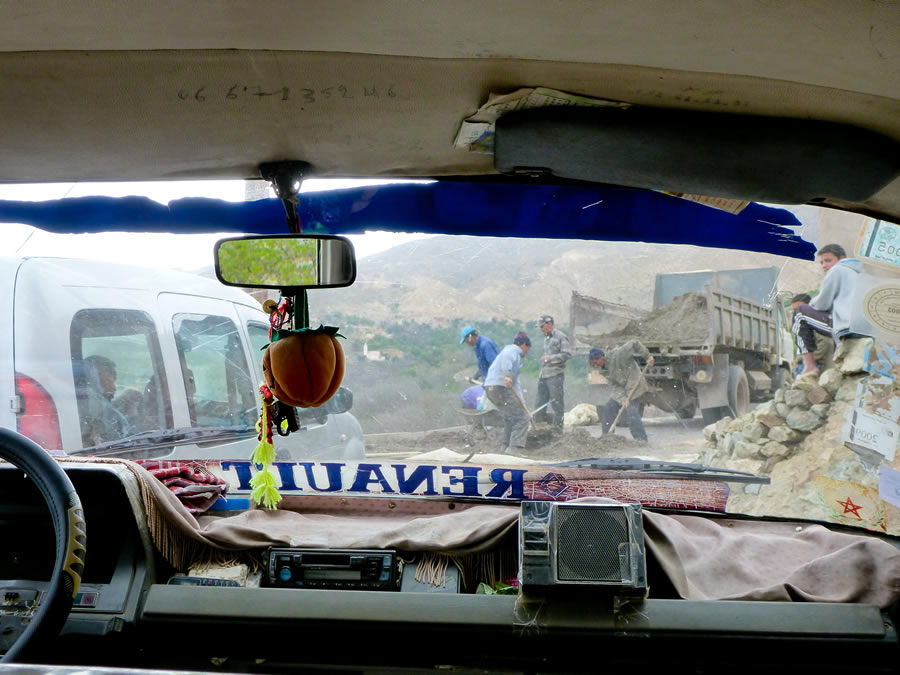
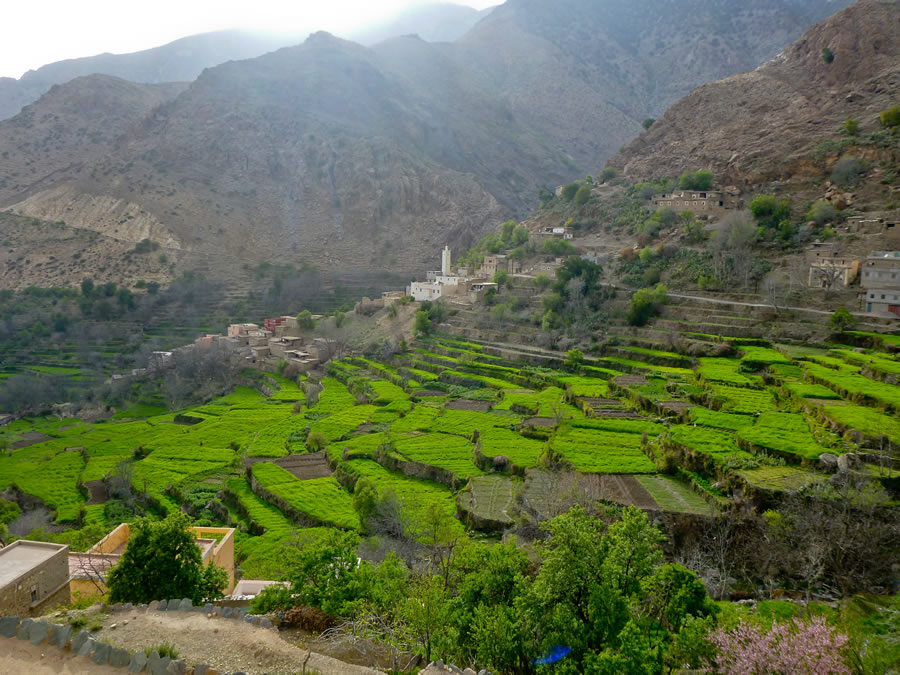
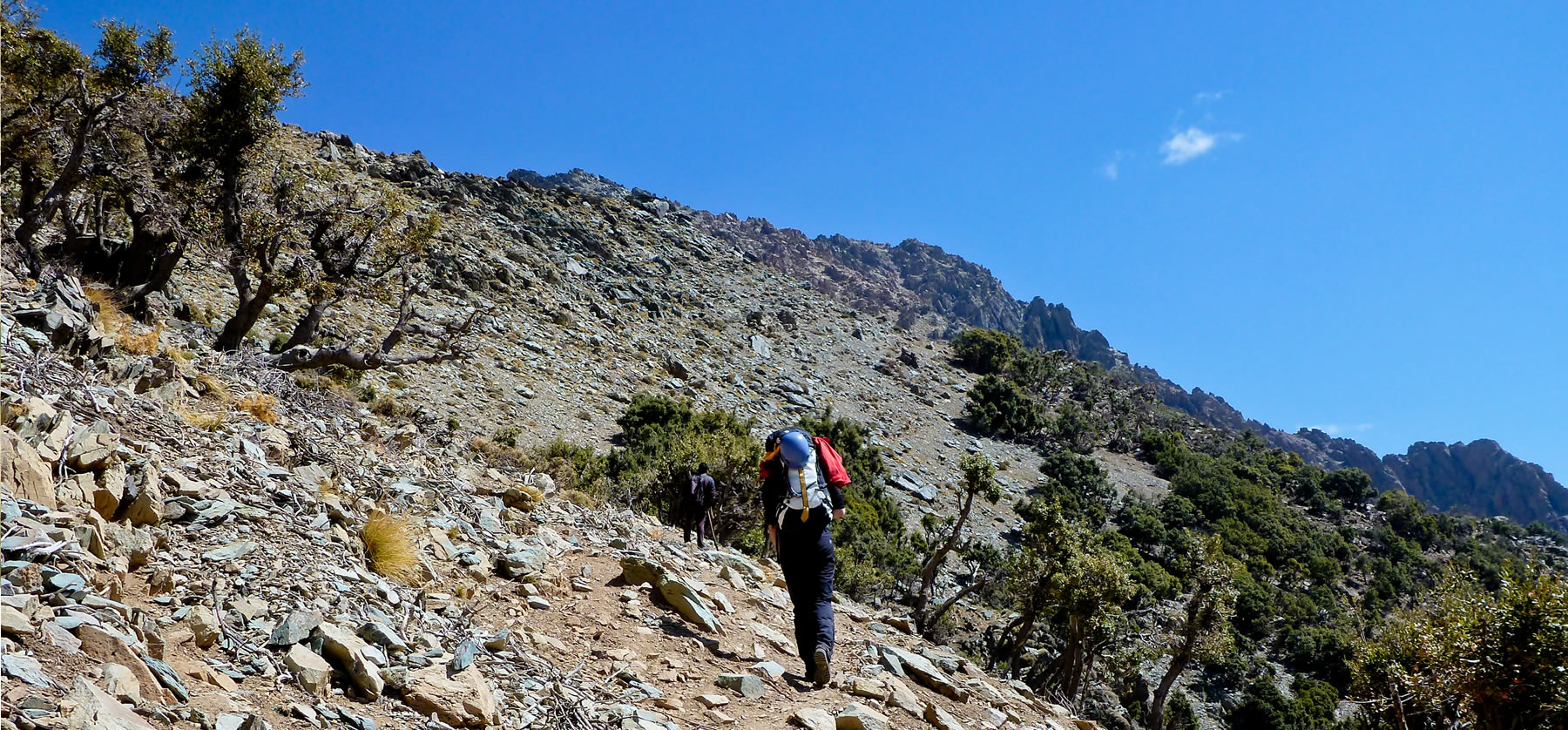
The western Atlas sees very little traffic compared to the Toubkal and Mgoun regions to the east. In winter, even fewer come here and we planned to attempt a week-long, unsupported, high-level traverse. The traveller Hamish Brown dubbed it “The Ridge of One Hundred Peaks”, an ominous tagline, but in all of his extensive writings he failed to really describe the route. Other writers such as Michael Peyron and Des Clark barely manage a sentence between them:
“ridge of 100 peaks (more like 20), at least a long two days, more in winter… Water availability a main issue and camping sites sparse…few escape routes”.
Hence our research was swift. In a spirit of adventurous optimism we booked flights to and from different airports in Morocco and left the rest to chance. Steve and I printed out a 1:100k Soviet map and peered at it in the truck. “Where do we go from here?” Steve inquired, motioning to my vaguely scrawled line across the paper which ended in the middle. “Just keep going East, can’t be too hard to walk out to the road and hitch” I lied. We later found out I’d misread the scale by a factor of three. Steve reminded me he’d never hiked anywhere without a path before. With credentials like these, success was guaranteed.
“In a spirit of adventurous optimism we booked flights to and from different airports in Morocco and left the rest to chance.”
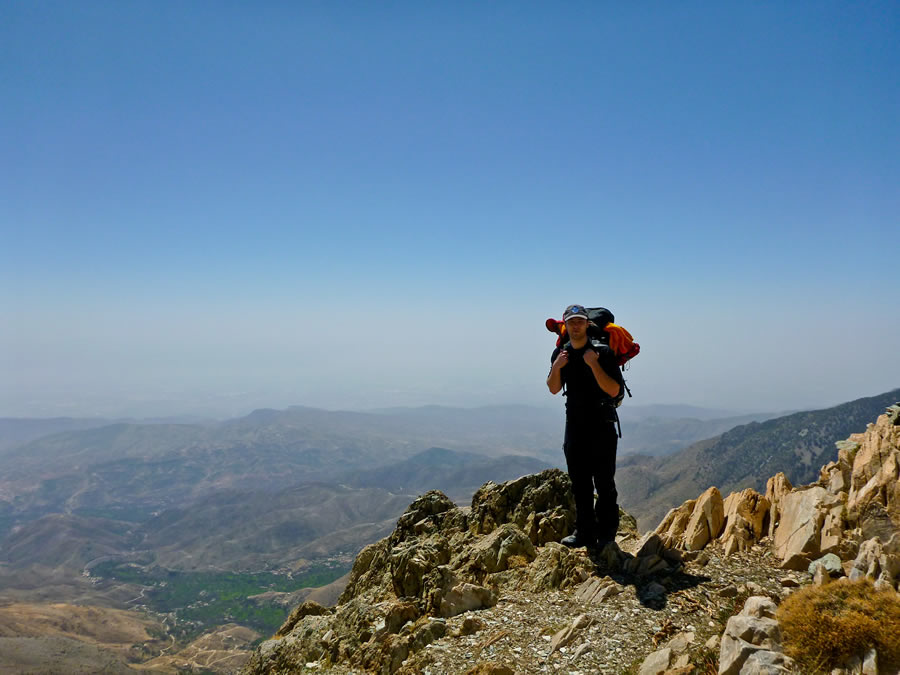
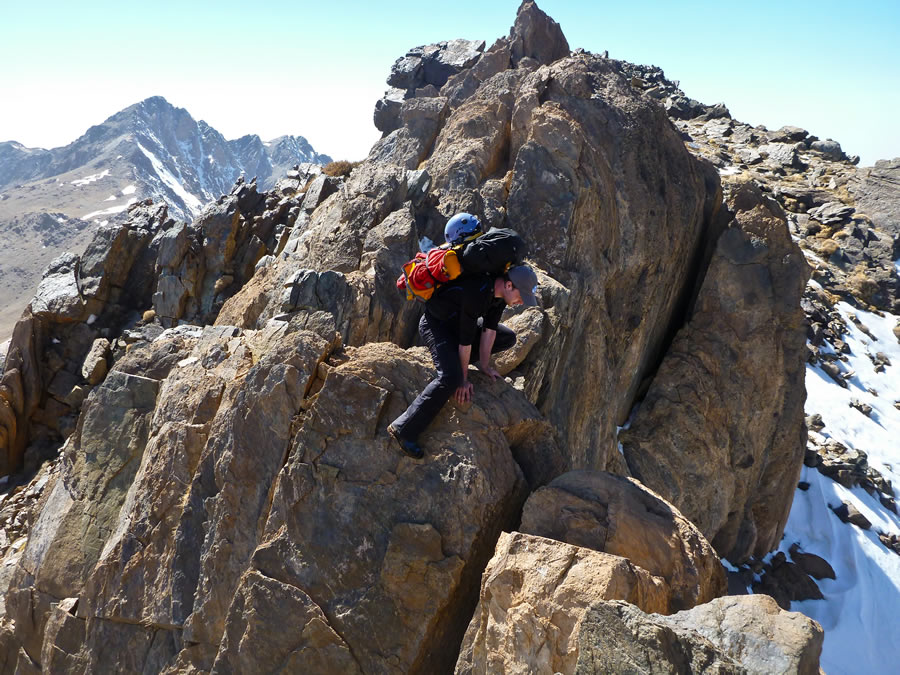

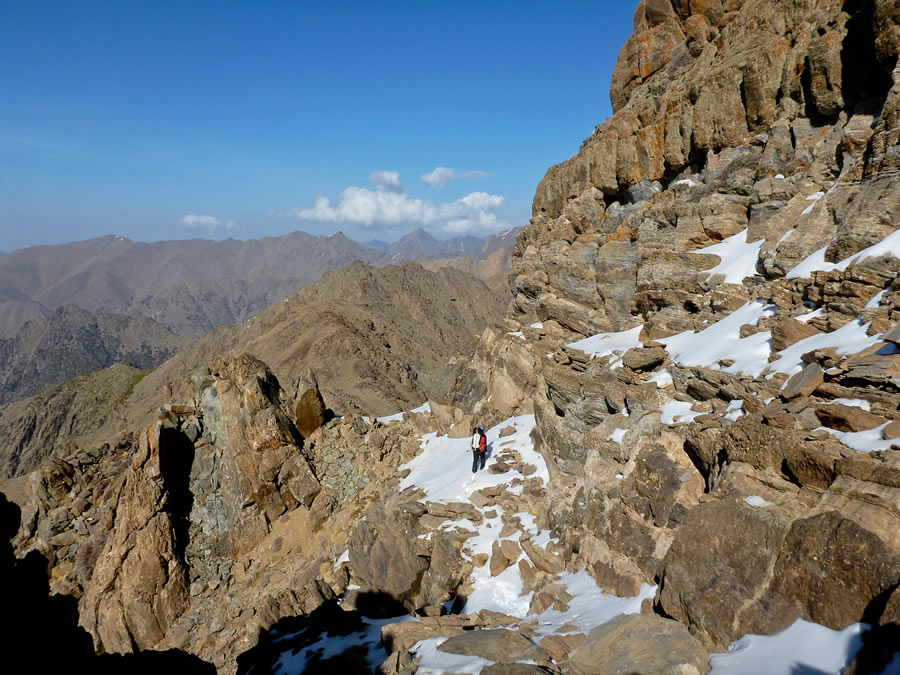
Steve and I began our hike up on the Sunday morning in stifling heat. We had packed everything we needed to survive eight days until our return flight, save for my rollmat which lay lost in Taroudant market amongst the charcoal. We strained our eyes, scouring the ridge for the tell-tale glimmer of white but saw none. Winter traverses usually require snow, but in our case we were critically dependent upon meltwater as our six day route held no natural springs. Our wine bottle of white spirit was our fuel and we took axes, one rope and a light rack for any steeper sections.
Our first night in the mountains was on a soft grassy plain. I looked up towards Jbel Tinergwet and the blue expanse above before settling in to a hard night lying on a bed of rope. We were blessed with phenomenal cloudless weather and spent our second day traversing the high peaks which mark the very end of the Atlas range. At around 3pm we summited Jbel Awlim and looked ahead down the steep and snowy north-eastern face. It looked hard.
Steve consulted the guide. The good news was that this was the only real peak on the route which mentioned a recommended descent route. Sadly, the route in question had just been used as our approach. So began a sketchy, slippery, torturous descent down a lasagne of melted snow, loose scree and polished slabs. With no real opportunity to safeguard the climbing we gingerly picked a line which varied between cautious down-climbing and blind leaps of faith onto steeply angled snow slopes sat upon steeply angled rubble. Tired and hungry, my multi-fuel stove failed us that evening and we ate only after paying it considerable love and attention. We slept well.
“The good news was that this was the only real peak on the route which mentioned a recommended descent route. Sadly, the route in question had just been used as our approach.”
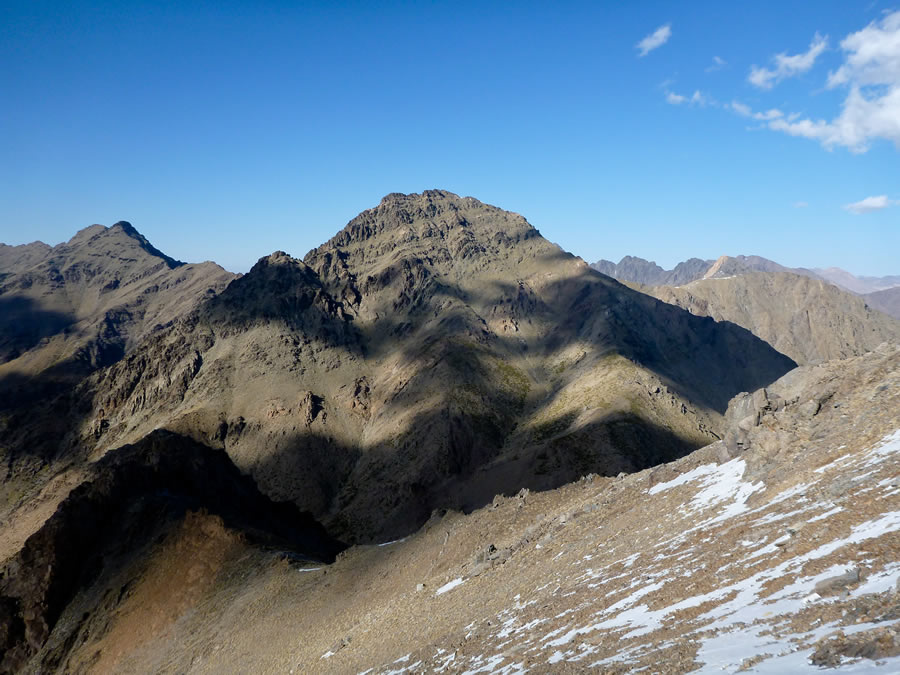
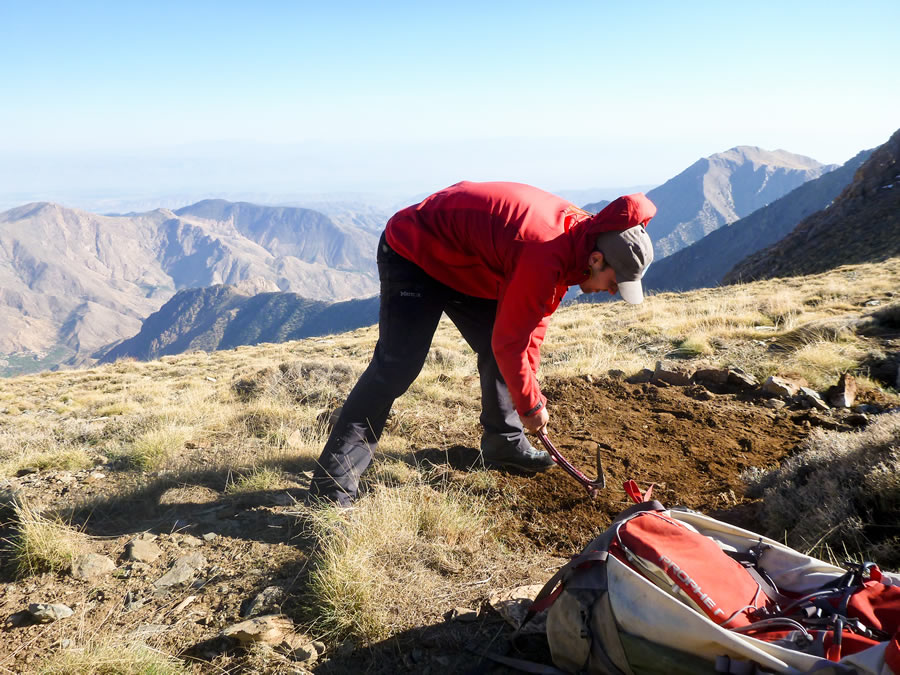

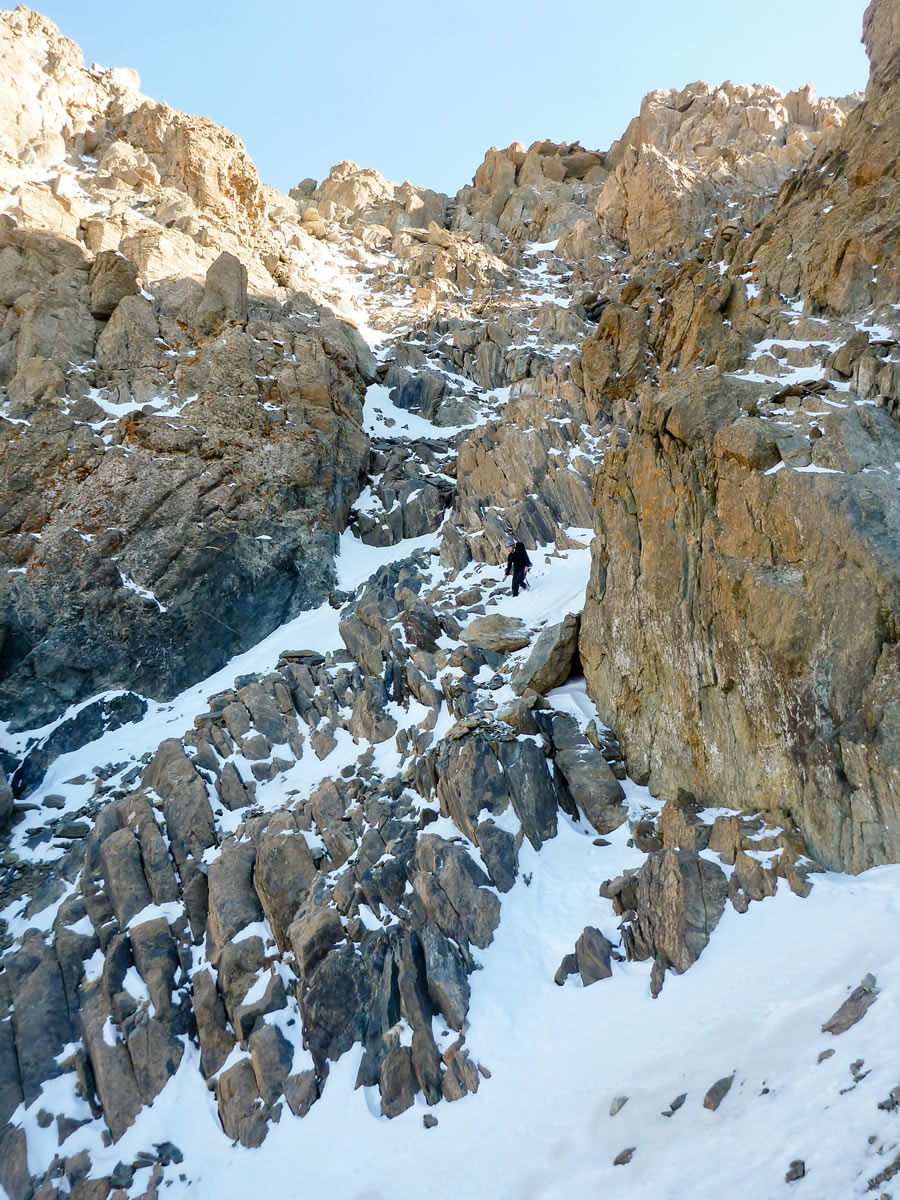
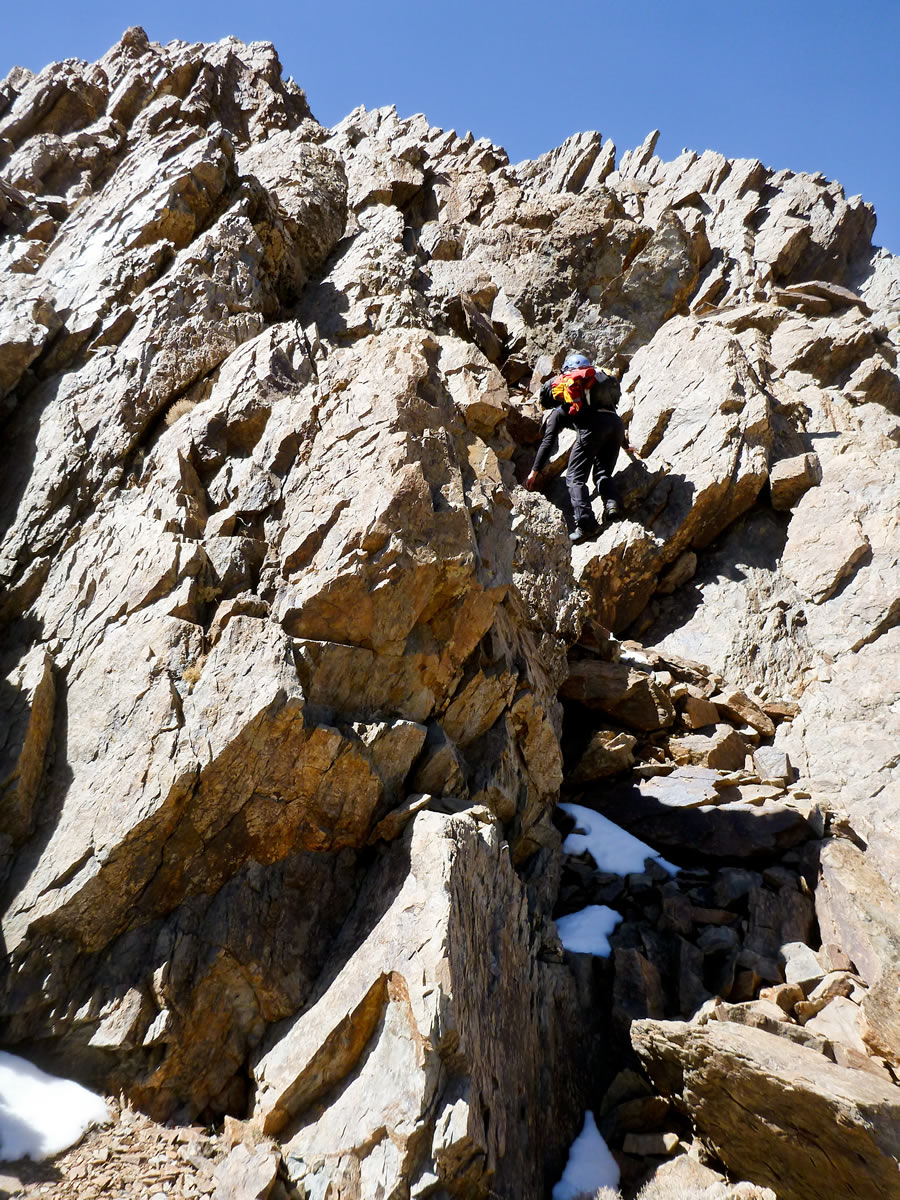
We may have had no snow and bags laden with un-need winter gear, but in return for our toils Morocco had gifted us unrelenting waves of gorgeous sunshine, expansive vistas and barren, unpopulated ridgelines. The climbing difficulty varied from hard backpacking to exposed scrambling. We rationed our gas and scraped ice crystals into our bottles as we walked across occasional patches of snow. More than once we reached the summit of a mountain, hot and parched, to have only the brown sludge which inhabited the bottom of our bottles to quench our thirst. Few creatures lived in this semi-desert and Morocco appeared only to have evolved spikey plants, a constant thorn in our side at every rest.
On day four we made a friend. A local berber herding goats up the hills came to say hello. We were all smiles but our shared language was at first limited to two local village names and much enthusiastic hand waving. Turning to leave it suddenly dawned on the berber that we were English and he proceeded to reel off a list of the entire English Premier League. Football is a shared language that knows no borders.
“More than once we reached the summit of a mountain, hot and parched, to have only the brown sludge which inhabited the bottom of our bottles to quench our thirst.”
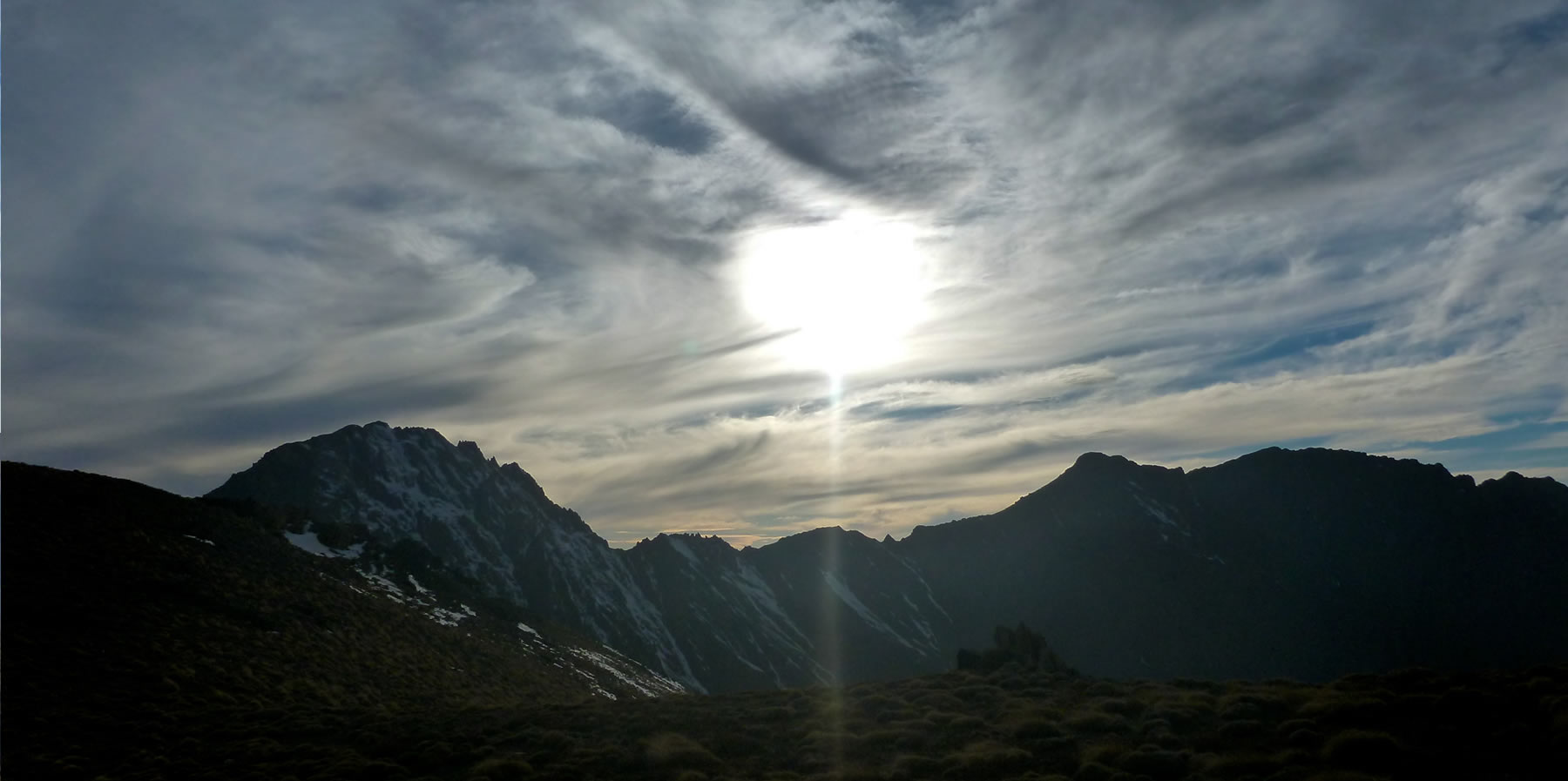

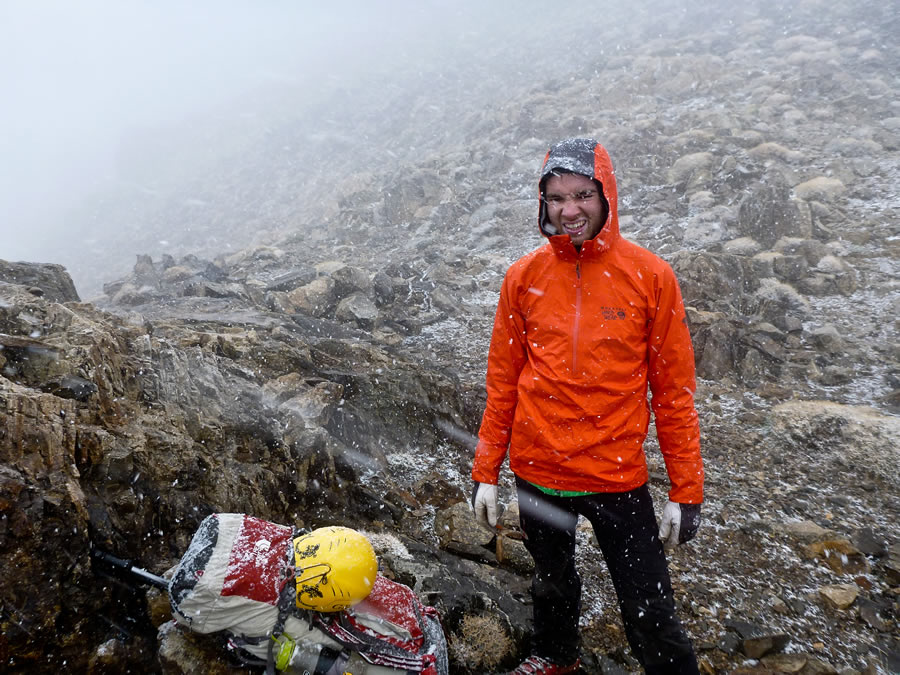
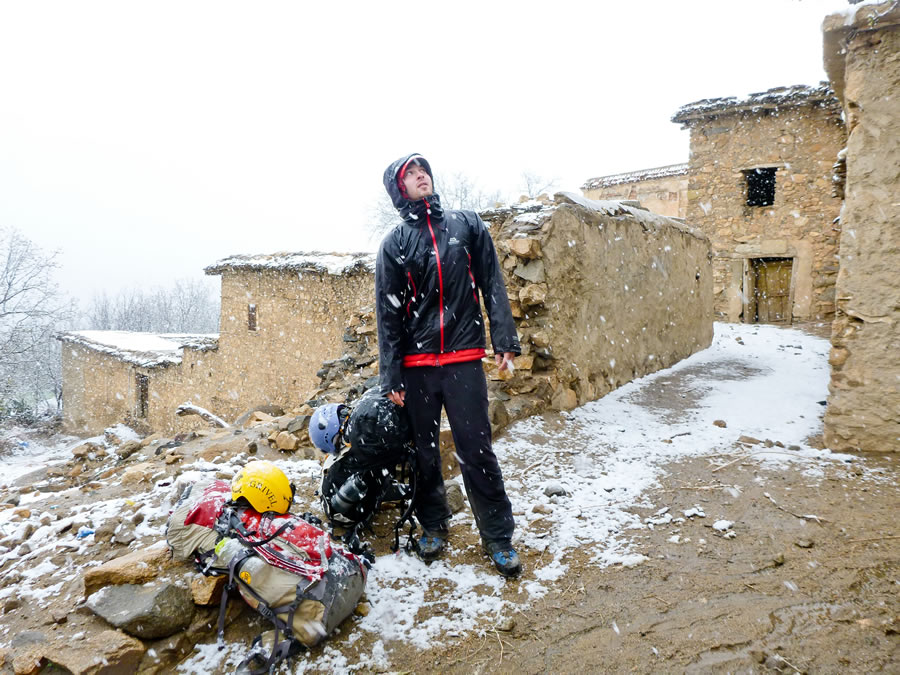

With one final scree and snow filled gully, we climbed up to the Tichka Plateau as the sun set on the fifth day. Day 6 was to be our last. Thick clouds rolled in from the east and we struck camp without haste the next morning. Our first overcast day in a week turned into a whiteout and we fumbled our way down the 4000ft mountainside descent towards the faint cries of berbers and goats below. From afar, one could barely tell animal from man.
Emerging into a wet and snowy village an army of elderly women adopted us and gestured us along a tour, ending at the village mosque. After a slightly awkward 45 minute wait outside the men emerged to shake our hands and then their heads as we asked “français? français?” Starting to get desperate, a younger chap with a ridiculous beaming grin shook my hand vigorously and cried “ouiiiii, bien sur! Tu manges du couscous?” and we followed him hungrily.
In 30+ years of living there, Mohamed Nacer had never seen a map of his local mountains. We took his photo, promised to post it from England and paid his friend to drive us down. The minibus descent to Ouled Berhil below was particularly memorable. Squeezed into the front between the driver and an enormous foot well speaker, we roared with laughter as the driver struggled in vain to repair his horn which blared continuously at the traffic ahead.
Our adventure was over.
“Our first overcast day in a week turned into a whiteout and we fumbled our way down the 4000ft mountainside descent towards the faint cries of berbers and goats below.”
